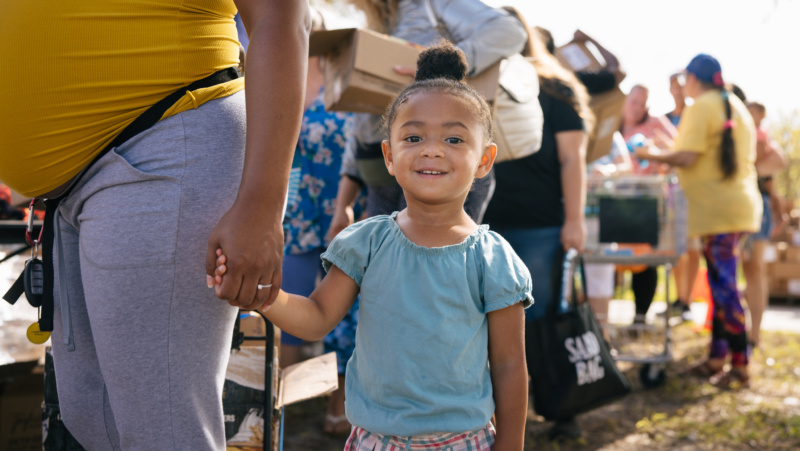According to an updated report, 29% of Arizona households with children experienced food hardship in 2010, which is defined as not having enough money to buy needed food during the previous twelve months. This ties Arizona with Louisiana for the 7th worst food hardship rate for households with children in the country. Nationally, the average food hardship rate for households with children was 23.4% and Washington D.C. led all states at 37.4%.
The food hardship data comes from a report released by the Food Research and Action Center (FRAC), which began compiling the data in 2008 and has been updated with 2010 data by state, Metropolitan Statistical Area (MSA) and Congressional District. The data reflects the impact of the recession and general economic uncertainty by quantifying food hardship—the inability of a household to afford enough food for all its members.
Food hardship data is also broken down by Metropolitan Statistical Area (MSA) and Congressional District. Both the Tucson and Phoenix-Mesa-Scottsdale MSAs ranked in the top-25 nationally for food hardship in households with children, ranking 15th (28.7%) and 20th (27.7%) respectively. Unfortunately, that means more than 1 in 4 children in both of Arizona’s major metro areas struggle with food hardship.
By Congressional District, the data shows two districts in Arizona ranked in the top 45 for food hardship in households with children. District 1 (Paul Gosar) tied for 14th wtih a 36.1% food hardship rate, while District 4 (Ed Pastor) ranked 39th with 32.4% rate, illustrating that food hardship rates for households with children are high in both urban and rural areas in Arizona. The complete breakdown:
| DISTRICT | REPRESENTATIVE | 2010 FOOD HARDSHIP RATE FOR HOUSEHOLDS WITH CHILDREN | NATIONAL RANK |
| 1 | Paul Gosar | 36.1% | 14 |
| 2 | Trent Franks | 28.4% | 111 |
| 3 | Ben Quayle | 25.1% | 189 |
| 4 | Ed Pastor | 32.4% | 39 |
| 5 | David Schweikert | 13.9% | 404 |
| 6 | Jeff Flake | 23.4% | 227 |
| 7 | Raúl Grijalva | 26.0% | 166 |
| 8 | Gabrielle Giffords | 22.0% | 276 |
The FRAC report analyzes survey data collected by Gallup. The ability to provide such localized data and such up-to-date data comes from Gallup’s partnership with Healthways, interviewing 1,000 households per day almost every day since January 2, 2008 as part of the Gallup-Healthways Well-Being Index project. For this report, more than 352,000 people were asked in 2010 whether there were times over the preceding year that they did not have enough money to buy food they or their family needed. Click here to read the full report (PDF).
The Gallup survey question on food hardship is very similar to one posed by the Census Bureau and analyzed by the U.S. Department of Agriculture in its official measure of food insecurity, but because of sample size, Gallup provides a closer, more localized and more recent look at food hardship. Official government data on food insecurity have a nearly one-year time lag and do not go below the state level.
Established in 1984, the Association of Arizona Food Banks is a private, non-profit organization serving five-member regional food banks (Community Food Bank, Desert Mission Food Bank, St. Mary’s Food Bank Alliance, United Food Bank, Yuma Community Food Bank) and a network of nearly 1,700 food pantries and agencies. As one of the first state associations in the nation and an inaugural partner state association of Feeding America, AAFB was instrumental in the development of a statewide gleaning project, and our advocacy efforts have brought about beneficial state and federal legislation for our member food banks and the people they serve. For more information, to find a food bank or pantry in your area, or to learn more about donation and volunteer opportunities, please visit www.azfoodbanks.org.
